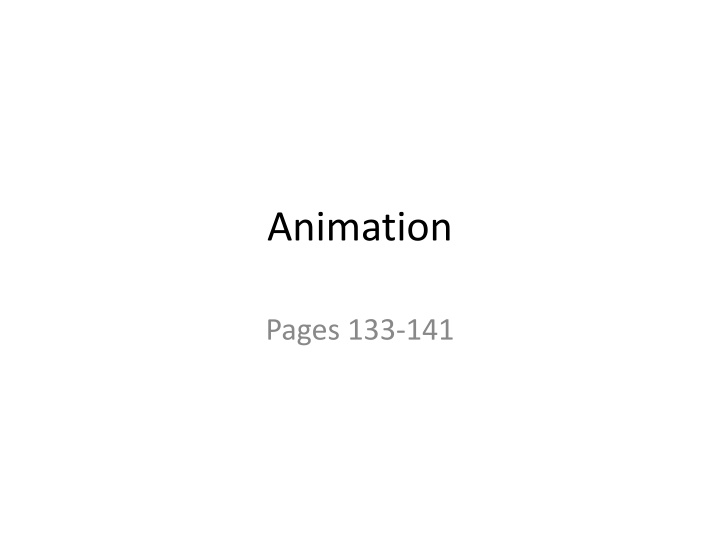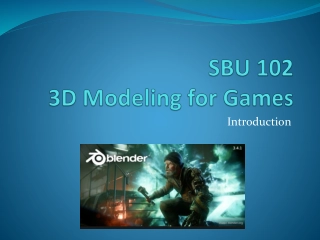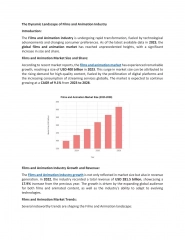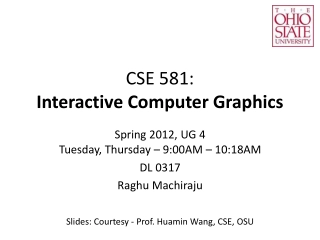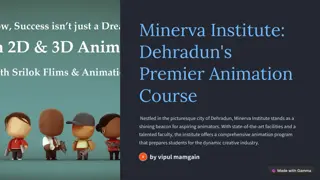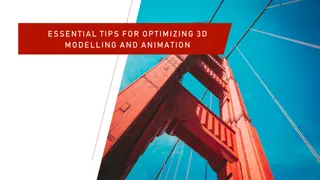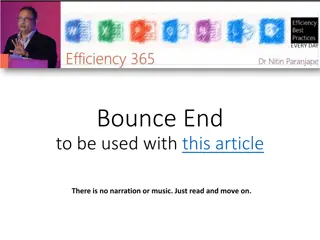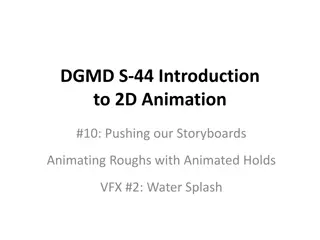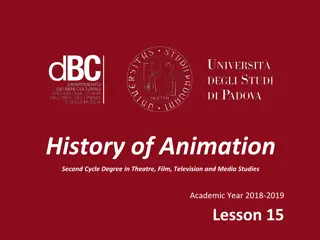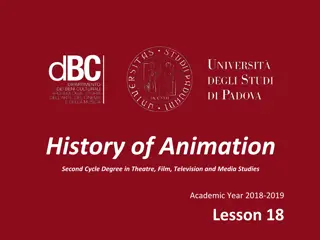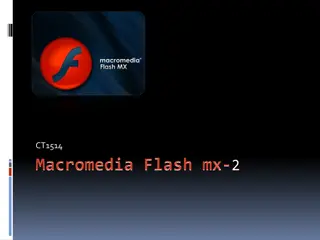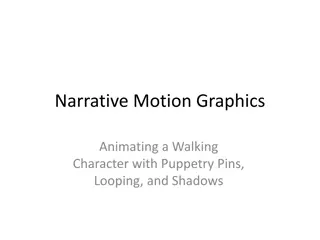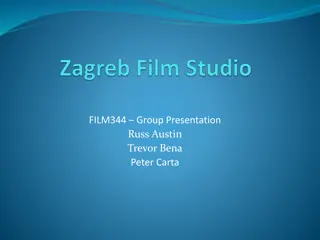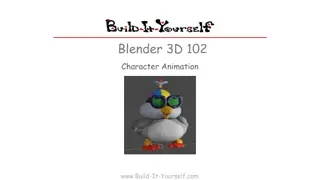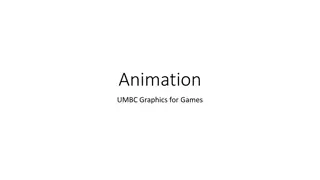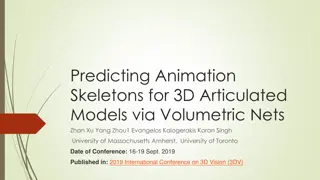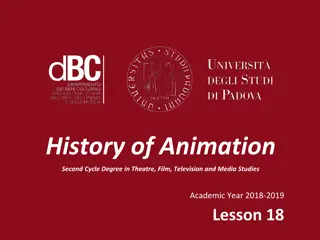Animation
Concepts of animation, functions, function parameters, return types, function calling, and intuitive understanding in programming. Dive into examples of adding, multiplying, and subtracting values. Learn about function definitions, formal parameters, local variables, and returns. Discover how translation functions move origins and how to handle multiple objects with independent motion and collision detection. Understand the use of matrices for layered control and color representation in coding syntax.
Download Presentation

Please find below an Image/Link to download the presentation.
The content on the website is provided AS IS for your information and personal use only. It may not be sold, licensed, or shared on other websites without obtaining consent from the author.If you encounter any issues during the download, it is possible that the publisher has removed the file from their server.
You are allowed to download the files provided on this website for personal or commercial use, subject to the condition that they are used lawfully. All files are the property of their respective owners.
The content on the website is provided AS IS for your information and personal use only. It may not be sold, licensed, or shared on other websites without obtaining consent from the author.
E N D
Presentation Transcript
Animation Pages 133-141
Function Function Definition Calling a function Parameters Return type and return statement
Function: Intuitive Understanding Function F F(x) X
Examples 20 Add 10 10 X=10, y=4 Multiply (x,y) 40 4 Subtract 6
Function concept int z = add(34, 10); // function call Function definition: 34 10 int add (int x , int y) // x,y formal parameters { int sum;// sum is a local variable sum = x + y; return sum; } X Y add sum
translate Translate function moves the origin by the amount specified int x,y; x = 10; y = 10; void draw() { background(30,50,60); translate(x,y); rect(x,y,70,30); x++; if (x> width) x = 0; y++; if (y>height) y = 0; }
Multiple objects Consider a scenario with multiple objects Each with its own initial position Size Speed How will you define these? How will control these? How will you detect collisions among these and take action?
Matrices (or layers) In order to represent independent motion and axes and other attributes, Processing provides pushMatrix() and popMatrix() These create new layers of axes for objects to exist and be controlled independently. Lets look at some examples.
Color by Numbers Pages 85-93
Syntax Introduced color color() colorMode()
Red, Green, Blue RGB is a common way to specify color Minimum value of number is 0 Maximum value of number is 255 Resulting in 256 different shades for each color 0 is black, 255 is the specific color
Functions that take color as parameters background(r,g,b); fill (r,g,b); fill(r,g,b,alpha) stroke(r,g,b); stroke(r,g,b, alpha) alpha is for opaque/transparency 0 entirely transparent 255 entirely opaque
Example1 (size 100X100) background(129,130,87); noStroke(); fill(174,221,60); rect(17,17,66,66);
Example2 background(129,130,87); noFill(); strokeWeight(4); stroke(174,221,60); rect(19,19,62,62);
Example 3: transparency background(116,193,206); noStroke(); fill(129,130,87,102); // more transparent rect(20,20,30,60); fill(129,130,87,204); // less transparent rect(50,20,30,60);
Example 4 background(0); noStroke(); fill(242,204,47,160); // yellow ellipse(47,36,64,64); fill(174,221,60,160); // green ellipse(90,47,64,64); fill(116,193,206,160); // blue ellipse(57,79,64,64);
color object color(gray); color(gray,alpha); color ruby= color(211,24,24,160); color pink = color(237,159,176); background(pink); noStroke(); fill(ruby); rect(35,0,20,200);
Hue, Saturation, Brightness mode Hue is the actual color. It is measured in angular degrees counter-clockwise starting and ending at red = 0 or 360 (so yellow = 60, green = 120, etc.). Saturation is the purity of the color, measured in percent from (0) to (100). At 0% saturation, hue is meaningless. Brightness is measured in percent from black (0) to white (100). At 0% brightness, both hue and saturation are meaningless.
Set a single pixel Lets look at three program and review the code.
Summary We studied the usage of color and transparency We also covered other color mode HSB (Hue, Saturation, Brightness) We analyzed code using these attributed and some complex math.
